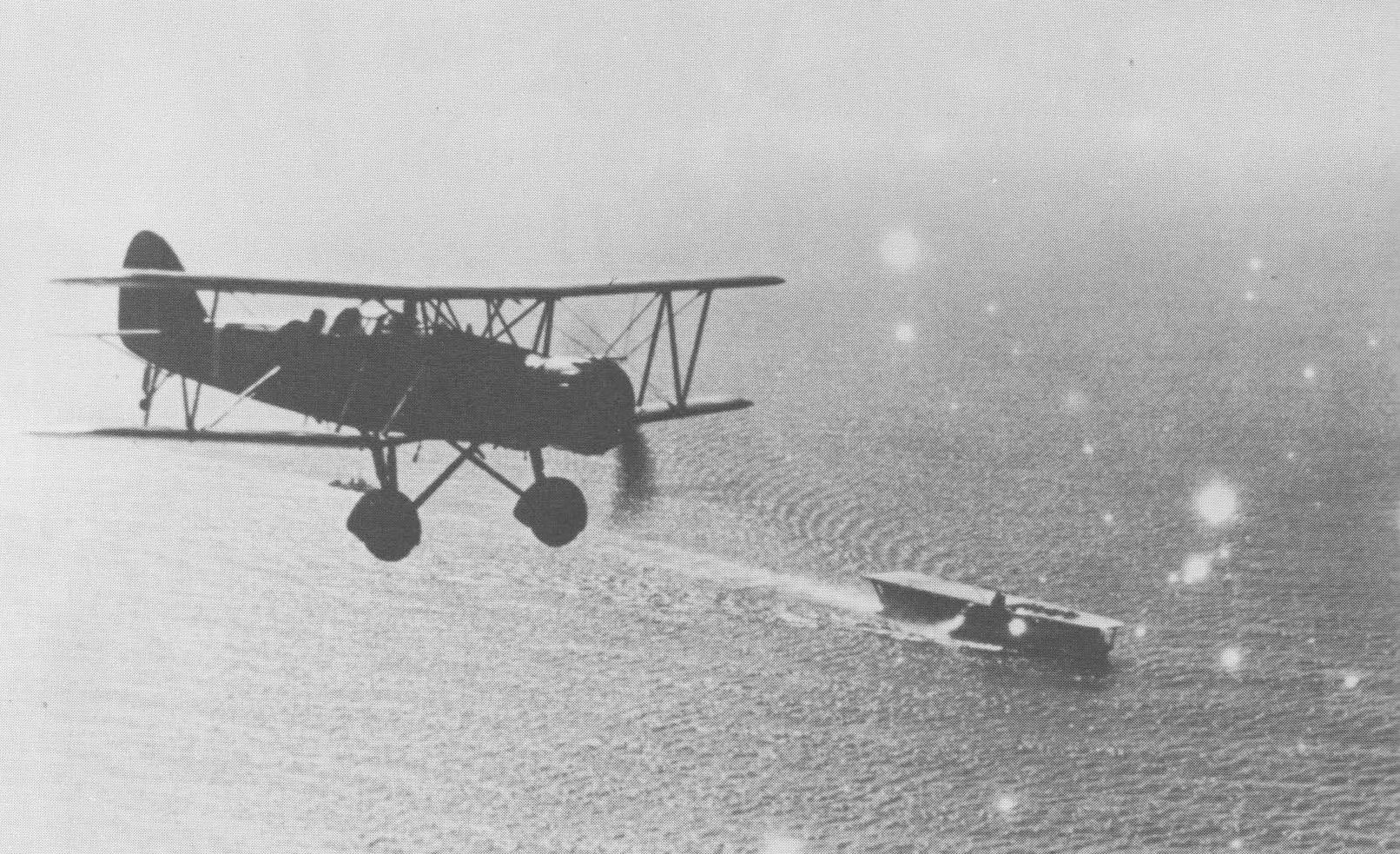
| Historical Information | ||||||||
| Caption | Japanese Navy Type 96 biplane fighter flying over carrier Kaga, off China, 1937-1938 ww2dbase | |||||||
| WW2-Era Location Name | China | |||||||
| Date | 1938 | |||||||
| Photographer | Unknown | |||||||
| Source Information | ||||||||
| Source | ww2dbaseWikimedia Commons | |||||||
| Link to Source | Link | |||||||
| Related Content | ||||||||
| More on... |
| |||||||
| Licensing Information | ||||||||
| Licensing | This work originating in Japan is in the public domain. According to Article 23 of the 1899 Copyright Act of Japan and Article 2 of Supplemental Provisions of Copyright Act of 1970, a work is in the public domain if it was created or published before 1 Jan 1957. Please contact us regarding any inaccuracies with the above information. Thank you. |
|||||||
| Metadata | ||||||||
| Added By | C. Peter Chen | |||||||
| Photo Size | 1,612 x 983 pixels | |||||||
Please consider supporting us on Patreon. Even $1 per month will go a long way! Thank you. Please help us spread the word: Stay updated with WW2DB: |
Visitor Submitted Comments
2.  Bill says:
Bill says:
14 Jan 2012 07:38:18 PM
In the 1930s the Imperial Navy Kaga's air group was made up of Twelve Mitsubishi A5M "Claude" fighters, Thirtysix Yokosuka B4Y "Jean" torpedo bombers and Eighteen Aichi D1A "Susie" dive bombers.
1930s EQUIPMENT: WAS REPLACED IN THE 1940s
FIGHTERS:
The Mitsubishi A5M "Claude" was an open cockpit fixed landing gear fighter w/2x7.7mm machine guns. later to be replaced by the Mitsubishi A6M2-21 Zero w/2x7.7mm machine guns and 2x20mm cannons.
TORPEDO BOMBERS:
The Yokosuka B4Y "Jean" was an open cockpit, torpedo bomber biplane w/fixed landing gear, w/1x7.7mm machine gun. later to be replaced with the Nakajima B5N "Kate" torpedo bomber
w/1x7.7mm machine gun.
DIVE BOMBERS:
The Aichi D1A "Susie" was an open cockpit biplane dive bomber w/fixed landing gear w/3x7.7mm machine guns. later to be replaced with the Aichi D3A "Val" dive bomber
w/3x7.7mm machine guns.
14 Jan 2012 07:38:18 PM
In the 1930s the Imperial Navy Kaga's air group was made up of Twelve Mitsubishi A5M "Claude" fighters, Thirtysix Yokosuka B4Y "Jean" torpedo bombers and Eighteen Aichi D1A "Susie" dive bombers.
1930s EQUIPMENT: WAS REPLACED IN THE 1940s
FIGHTERS:
The Mitsubishi A5M "Claude" was an open cockpit fixed landing gear fighter w/2x7.7mm machine guns. later to be replaced by the Mitsubishi A6M2-21 Zero w/2x7.7mm machine guns and 2x20mm cannons.
TORPEDO BOMBERS:
The Yokosuka B4Y "Jean" was an open cockpit, torpedo bomber biplane w/fixed landing gear, w/1x7.7mm machine gun. later to be replaced with the Nakajima B5N "Kate" torpedo bomber
w/1x7.7mm machine gun.
DIVE BOMBERS:
The Aichi D1A "Susie" was an open cockpit biplane dive bomber w/fixed landing gear w/3x7.7mm machine guns. later to be replaced with the Aichi D3A "Val" dive bomber
w/3x7.7mm machine guns.
All visitor submitted comments are opinions of those making the submissions and do not reflect views of WW2DB.
Change View
Desktop ViewSearch WW2DB

News
- » Wreck of Teruzuki Found (27 Jul 2025)
- » USS Orlean's Bow Found (22 Jul 2025)
- » The Emperor of Japan Planned to Honor WW2-era Japanese POWs in Mongolia (4 Jul 2025)
- » US State Lawmaker John Winter Caught Using Racial Slur "Jap" and Apologized (11 Jun 2025)
- » US Government Plans to Purge WW2 Information (17 Mar 2025)
- » See all news
Current Site Statistics
- » 1,181 biographies
- » 337 events
- » 45,132 timeline entries
- » 1,249 ships
- » 350 aircraft models
- » 207 vehicle models
- » 376 weapon models
- » 123 historical documents
- » 261 facilities
- » 470 book reviews
- » 28,427 photos
- » 365 maps
Famous WW2 Quote
"No bastard ever won a war by dying for his country. You win the war by making the other poor dumb bastard die for his country!"George Patton, 31 May 1944
14 Jan 2012 07:43:44 AM
NEVER UNDERESTIMATE YOUR ENEMY:
Before Pearl Harbor, 12/7/41 US Intelligence believed Japanese Naval Air Forces and the Army Air Force operated outdated biplane aircraft. Reports from the war in China were filed away and not taken seriously.
Events before Pearl Harbor and what types
of aircraft that were used by Japan, many believed that the B4Y "Jean" Torpedo bomber,
D1A "Susie" Dive bomber and the A5M "Claude"
fighter, were first-line equipment as late as 1941. Intelligence even believed Japanese pilots were second-class to Western pilots and training.
h the U.S. and British Intelligence as well as other Countries in Western Europe
also believed that the Japanese aircraft industry built copies of dated Western designs. And Japan could only produce copies of dated Western designs.